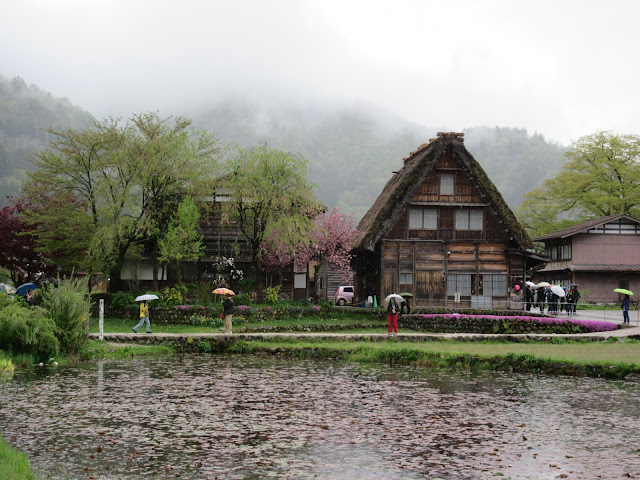Kanazawa 金沢
I took the tourist bus to different stops around the city today, starting with the Higashi Chaya District.
Higashi Chaya is one of Kanazawa's geisha entertainment districts. There are now a few teahouses that are open to the public in the area and shops selling gold leaf products, one of Kanazawa's specialities. I visited Shima teahouse, a former geisha house that has been preserved as a museum.
Next I headed over to the Samurai district, an area with lots of preserved samurai resdiences and museums.
On the edge of the Samurai district is Kanazawa Shinise Kinenkan, an old pharmacy building from the feudal period. It is now a museum displaying the lives of the merchant classes, a restored pharmacy, tearoom, local handicrafts and garden. The kaga temari balls caught my eye, with their colourful designs. Girls in noble families made them from expensive silk, but in the Edo period it spread to ordinary people too thanks to cotton.
Before heading to find food, I went for a wander round Oyama Shrine, Ozaki Shrine, and the 21st Century Museum of Contemporary Art. I'm not very interested in walking around art museums normally, but some of the pictures I'd seen of the place looked interesting.By Leandro Erlich, this swimming pool art installation gives the impression that people are standing at the bottom of the swimming pool. The illusion is created by 10cm of water between two panes of glass at the top of an empty pool. You can also walk into the pool and look up at the water above you.
I wandered through the Omicho Markets before going to find something to eat. In 2016 I was still unsure about eating alone in some types of restaurants or izakaya pubs, but this seafood rice bowl looked good on the menu so I went in.
I stayed at Guesthouse Shiro. The hostel is in a traditonal house very close to Kanazawa Castle Park. I'd recommend it to anyone looking for somewhere very cheap. There were two bunkbeds in the room I stayed in and each bed had curtains for privacy. The staff were very friendly too.




























